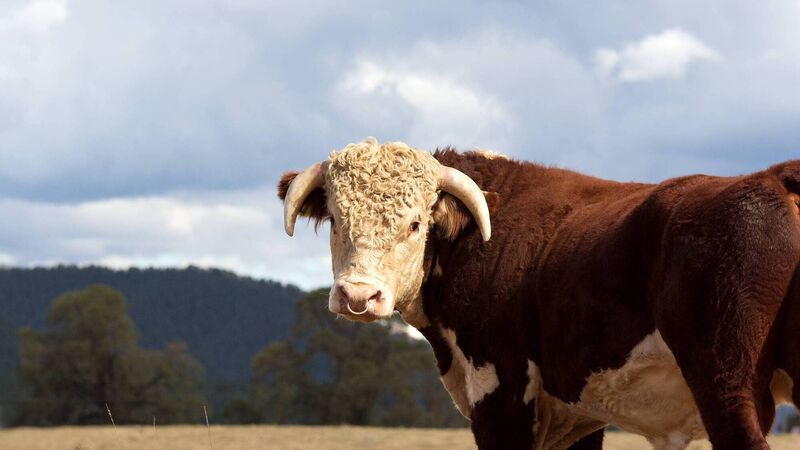Inquest into Cork farmer's death from bull attack recommends escape points in cattle pens

The inquest heard an angry bull would seek to knock someone down and then apply the weight of either their head or front legs on them.
An elderly farmer was fatally injured by his bull ahead of a cattle test, with the jury at his inquest now recommending that health and safety watchdogs look at mandatory exit points in cattle pens.
Joseph Shorten of Castletown-Kinneigh near Enniskeane in Co Cork was discovered lying on his side in the yard of his farm at Ardkitt by the veterinary surgeon who was coming to read the cattle test. Mr Shorten’s body was some 30 yards away from a pen where his Hereford bull was held.
The inquest at Bandon District Court into Mr Shorten’s death heard that his chest was “in bits” and that he must have managed to crawl out of the pen before collapsing. Gardaí ruled out the involvement of a third party and having spotted blood on the bull’s head and fibres from the bull on Mr Shorten’s jumper the investigation focussed on whether the bull had attacked the farmer, who was in his seventies.
The incident occurred on April 14 last year, with the initial cattle test having been conducted three days previously. Dr Jim Kelleher, a vet with the Riverview Practice in Bandon, arrived as scheduled at 3.35pm and found Mr Shorten.
In his statement read out at the inquest the vet said Mr Shorten's trousers had been loosened and were around the top of his wellingtons. He was not breathing and was cold, with blood on his nose.
Dr Kelleher called the emergency services and was advised to begin CPR. In his statement, Dr Kelleher said Mr Shorten’s chest felt “soft and brittle”. The emergency medic who pronounced Mr Shorten dead said it seemed his chest was “in bits”.
The vet said he noticed the Hereford bull was separate from the herd in a pen, which was not the case at the initial test when he was mixed in with the cattle, and that he also appeared to be lame. Coroner Frank O’Connell heard evidence that gardaí later requested the vet to take a hair sample from the bull’s head, which also had blood on it.
Dr Kelleher said that it might have been that Mr Shorten — who another witness had seen at a shop in Enniskeane shortly beforehand — may have tried to separate the bull from the herd so his leg could be looked at during the reading of the test and that might have annoyed the animal, who appeared agitated.
Dr Kelleher said that in 99% of situations involving cattle in enclosed spaces there are no escape points, leaving people to climb over a gate. Instead, he said, safe spaces involving vertical bars could help.
He said
The vet said cattle were unpredictable.
Following questioning from the coroner he said an angry bull would seek to knock someone down and then apply the weight of either their head or front legs on them. “The bull’s head is probably 100 kilos,” he said, adding that the bull in question weighed some 600 kilos.
Post-mortem findings given by Assistant State Pathologist Dr Margaret Bolster showed Mr Shorten had experienced severe blunt force trauma to his chest and abdomen including multiple fractures to his ribs and damage to his sternum as well as the collapse of both lungs and a laceration of the spleen.
She said this was consistent with an attack by a bull and that Mr Shorten would have lapse into unconsciousness. “Even if somebody had been there there would have been no hope,” she said.
As the case involved an occupational fatal injury a six-person jury considered the verdict and the recommendation from the veterinary surgeon.
They returned a verdict of occupational accident on a farm involving an attack by a bull which led to haemorrhage and shock due to severe blunt force trauma to the man’s chest and abdomen.
The jury also said they believed that as many as four escape routes should be considered for those working in close proximity with cattle and Mr O’Connell said he would write to the Health and Safety Authority in the next two days advising them of the verdict and the recommendations.
















